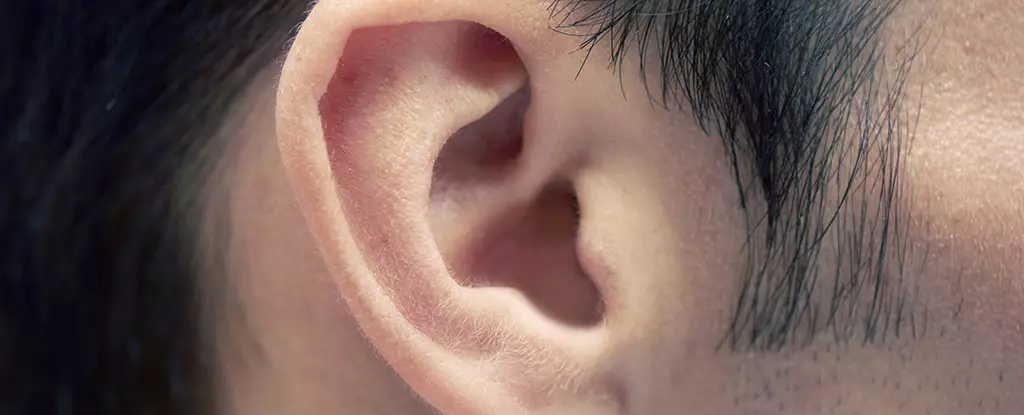Parkinson’s disease is notoriously challenging to diagnose early, and this delay compounds the difficulty of managing symptoms and exploring treatments. Traditional approaches rely heavily on clinical evaluations and expensive neuroimaging, often catching the disease only after significant neurological damage has occurred. However, an innovative study shines light on a surprisingly overlooked diagnostic source: the complex composition of human earwax. This research suggests that tiny, volatile organic compounds (VOCs) present in earwax might reveal subtle biochemical changes linked to Parkinson’s, offering a potential breakthrough in early diagnosis.
Why Earwax? A Protective Biochemical Vault
Previous research hinted at Parkinson’s influencing body odor by altering sebum—an oily secretion on the skin’s surface. While sebum’s changes could theoretically serve as biomarkers, its exposure to environmental contaminants has complicated efforts to develop reliable tests based on it. Earwax, by contrast, is a more enclosed secretion, sheltered from air and external pollutants, potentially making it a more stable and trustworthy medium for biochemical analysis. This shift in focus from skin-based samples to earwax is a smart approach that could circumvent some of the limitations frustrating past efforts in Parkinson’s biomarker identification.
Decoding the Chemical Signals: The Role of VOCs
The researchers targeted VOCs—small molecules that easily vaporize, enabling scent and chemical signaling—to detect biochemical footprints left by Parkinson’s illness processes such as inflammation, oxidative stress, and neurodegeneration. They collected ear canal swabs from over 200 individuals, including 108 diagnosed with Parkinson’s, analyzing the patterns of VOC presence and concentration. Their findings identified four VOCs—ethylbenzene, 4-ethyltoluene, pentanal, and 2-pentadecyl-1,3-dioxolane—that were distinctively different in Parkinson’s patients compared to healthy controls.
These compounds act as a kind of chemical fingerprint, reflecting underlying pathological changes. More than just potential diagnostic markers, these VOCs could also deepen scientific understanding of Parkinson’s biology, perhaps unveiling new therapeutic targets or insights into disease progression.
Artificial Intelligence: Enhancing Diagnostic Precision
Beyond identifying these compounds, the study integrated artificial intelligence to interpret the VOC data. Training an algorithm on the collected chemical profiles, the researchers created an artificial intelligence olfactory system (AIO). This AI tool demonstrated an impressive accuracy of 94.4% in distinguishing Parkinson’s patients within the study sample. This approach validates the potential for AI to navigate complex biochemical datasets and deliver reliable, non-invasive diagnostic assistance.
Though promising, one must exercise caution in interpreting these results. The study’s sample size, while respectable, remains modest. Larger-scale, multi-center validation studies are critical to confirm the AI model’s robustness and generalizability before clinical application.
Implications: Simpler, Faster, and Less Invasive Diagnosis
The prospect of a simple ear swab test for Parkinson’s is transformative. Shifting from expensive brain imaging and subjective clinical scoring toward an accessible biochemical screen could revolutionize screening in primary care and neurology clinics. It would enable earlier identification, facilitating timely intervention and potentially improving patient outcomes.
Moreover, the methodology’s convenience and cost-effectiveness could dramatically expand testing availability worldwide, addressing disparities in healthcare access. This is particularly vital since disease-modifying therapies will only be as effective as our ability to detect Parkinson’s before irreversible damage occurs.
The Road Ahead: Challenges and Opportunities
While this research carries exciting potential, several hurdles remain. The biochemical signals must be validated across diverse populations and throughout different disease stages to understand their consistency and predictive power. Understanding whether these VOC changes are a cause or consequence of Parkinson’s pathology is also pivotal.
The promise of VOC-based diagnostics underscores a broader shift toward precision medicine, leveraging molecular signatures for individualized disease detection and monitoring. Ultimately, unlocking the biochemical language encoded within earwax could open new avenues not only for Parkinson’s but other neurodegenerative diseases where subtle metabolic fingerprints precede overt symptoms.
In embracing unconventional diagnostic materials like earwax and integrating cutting-edge AI analysis, science takes a bold step forward to transform Parkinson’s care from reaction to proactive detection. While challenges remain, the study heralds a future where a small, painless swab from the ear may unlock critical insights into a complex neurological disease that has long eluded early diagnosis.

